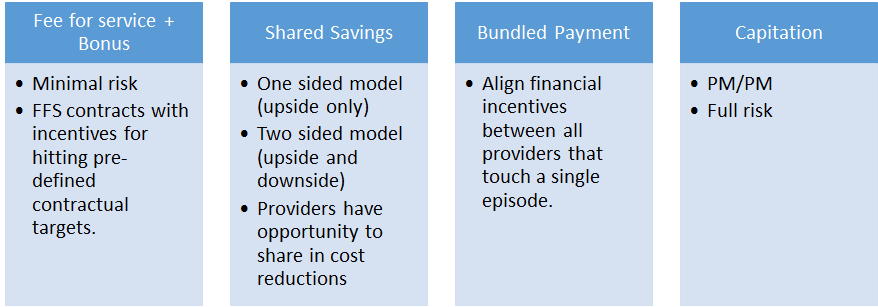As the shift from fee for service to value based payment develops, one thing is crystal clear: volume is no longer king. Prior to 2010, medical providers were being paid on the amount of services that they rendered. The more patients that they treated, the more money they made. That certainty has disappeared with value based compensation and outcomes are now driving the compensation. To be successful, a provider must learn to bend both the quality and cost curve. In short, providers must increase quality while decreasing costs.
When contemplating negotiating or entering into a value based contract, the first thing to consider is the amount of financial risk that your practice or healthcare business can take on. The four main types of financial payments are:
The best way to determine which payment model best suits your needs is to hire a qualified financial healthcare analyst who will be able to generate financial risk modeling. A provider will then have a common starting point to negotiate as well as a better understanding of the issues, risks, and potential cost savings involved. Continue reading



